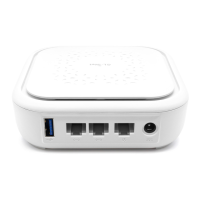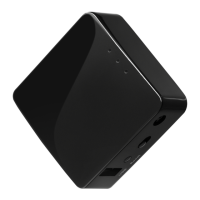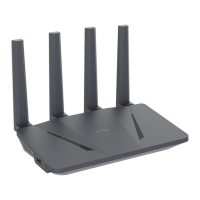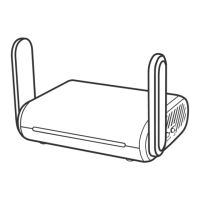
Do you have a question about the GL-INET Collie GL-X300B and is the answer not in the manual?
| Brand | GL-INET |
|---|---|
| Model | Collie GL-X300B |
| Category | Network Router |
| Language | English |
Connect the power cable to the router's power port for operation.
Connect your device via Ethernet cable or Wi-Fi to the router's local network.
Open a web browser and navigate to http://192.168.8.1 to access the admin interface.
Connect the router to a modem or main router via Ethernet cable for internet access.
Connect to an existing wireless network to extend Wi-Fi coverage.
Insert a SIM card into the built-in modem for mobile internet connectivity.
Set the unique name for the router's wireless network.
Select the encryption method for the Wi-Fi network.
Set a strong password for the Wi-Fi network, at least 8 characters long.
Choose whether to show or hide the Wi-Fi network name (SSID).
Choose Wi-Fi protocol standards like 802.11b/g/n for optimal performance.
Select Wi-Fi channel frequency coverage range (20/40MHz or 40MHz).
Manually select the wireless channel for the Wi-Fi network.
Set the Wi-Fi signal strength level (Max, High, Medium, Low).
Check and download the latest firmware version directly from the internet.
Upload a firmware file from your computer to update the router.
Schedule automatic firmware updates based on a set time.
Allow remote computers to connect to specific services within the local network.
Make router services (like web, FTP) publicly reachable by opening specific ports.
Expose a specific computer to the internet for all inbound packets.
Set up an OpenVPN client connection to access private resources securely.
Set up a WireGuard client connection for secure and fast VPN access.
Automatically disconnects the internet if the VPN connection drops.
Define specific routing rules for VPN traffic.
Install or remove OpenWrt packages (applications) to extend router functionality.
Enable remote management and access to the router.
Manage routers remotely through the GL.iNet cloud service.
Map a domain name to the router's dynamic IP address for remote access.
Display a web page to users before they can access the internet via Wi-Fi.
Set or change the password for accessing the router's web admin panel.
Change the router's local IP address if it conflicts with other devices.
Configure the router's time zone for accurate logging and scheduling.
Enable and manage GPS functionality for location tracking and time synchronization.
Copy a client device's MAC address to the router for network access.
Set custom DNS servers to prevent DNS leaks or enhance privacy.
Switch the router's operational mode (Router, Access Point, Extender, WDS).
Reset the router to its factory default settings, erasing all configurations.










